Designing Luxury: The Art of Bespoke Furniture with Jo Hauptman of Hyde House.
Today’s guest started her career in publishing after gaining a degree in Graphic Design. She hit the ground running at the forefront of luxury fashion with big names like Harvey Nichols, Aspreys, and Harpers Bazaar gaining a deep understanding of luxury and style.
Working with client’s including Chanel, Louis Vuitton, Prada, Harrods, Estee Lauder, and Tiffanys paved the way into interior design, where she has redefined the essence of luxury living. In 2007 she teamed up with third-generation master artisan and
furniture maker, Richard Searle and their luxury British bespoke furniture and joinery company was born
I am thrilled to have Joanna Hauptman, Managing Director of Hyde House on the podcast today.
Today’s guest is Joanna Hauptman
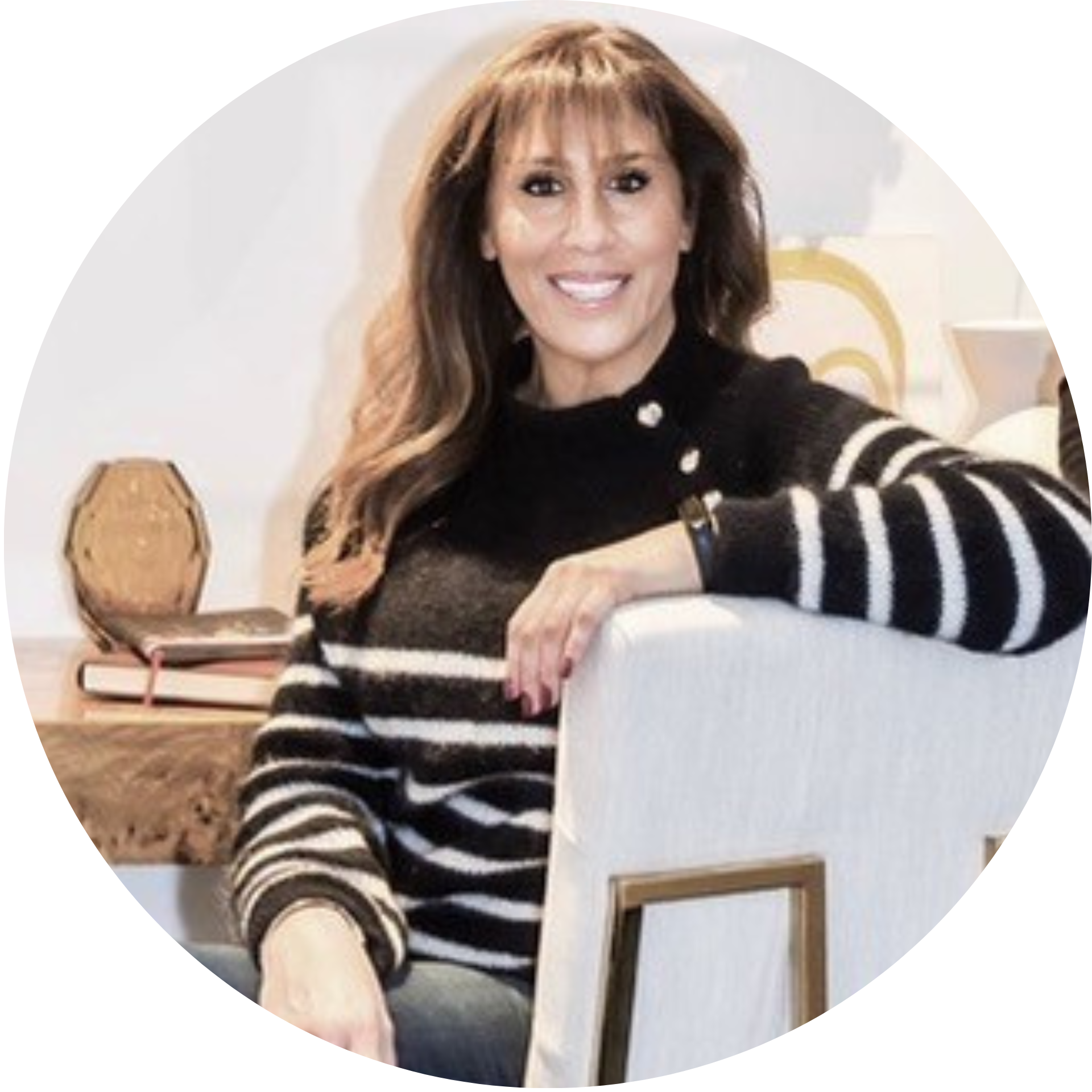
You can find her here –
Web: HydeHouse.co.uk
Insta: @HydeHouseUK
A few things we covered in this episode :
- Hyde House at Decorex
- Overcoming obstables
- Surviving an economic downturn
- Recruiting craftsmen
- Juggling kids and work
- The Avenue at Chelsea Harbour Design Centre
- PURE PR – Hyde House Press contact
- Resinate – Hyde House finishing process for all kinds of furniture applications.
- Emma Shipley tray by Hyde House – See below and more ideas here
- Dubai
- Design Shanghi

PODCAST TRANSCRIPT.
EmmaMT (Host)
Today’s guest started her career in publishing after gaining a degree in graphic design. She hit the ground running at the forefront of luxury fashion, with big names like Harvey Nichols, asperys and Harper’s Bazaar and Harper’s Bazaar gaining a deep understanding of the luxury, of luxury and style. Oh my God, I’ve had me done the first sentence. Let’s try that again. She hit the ground running at the forefront of luxury fashion, with big names like Harvey Nichols, asperys and Harper’s Bazaar, gaining a deep understanding of luxury and style. Working with clients including Chanel, louis Vuitton, prada, harrods, estee Lauder and Tiffany’s paved the way into interior design, where she has redefined the essence of luxury living. In 2007, she teamed up with third generation master, artisan and furniture maker, richard Searle, and their luxury British bespoke furniture and joinery company was born. I can’t say joiner. I’m thrilled to have Joanna Helpman, managing Director of Hyde House, on the podcast today. What an intro, hi Jo.
07:18 – Joanna (Guest)
Thank you so much for being here. Such a pleasure to be here. Thank you for having me.
07:22 – EmmaMT (Host)
I think if I did that again, I would have to put much smaller words in, because obviously I’m just getting tongue tied. There’s so many names and I’m like am I pronouncing?
07:29
Prada correctly, I think I know. And then, these are not words that roll off my tongue. Obviously they roll off yours. It’s so exciting to have you on, mainly because I keep bumping into you at events, and we’re just gas, gas, gas. I saw you at Decorex recently, where you did suggest that we should do shots while we record this podcast or do karaoke, both of which we will not be doing. That listeners can stay, it’s safe.
07:59 – Joanna (Guest)
Maybe afterwards, maybe afterwards.
08:05 – EmmaMT (Host)
I actually met you I was trying to work out when, many years ago, I came to shoot your house when I was the home-editor at Woman and Home and you had a very young daughter at the time, so that probably gives us a sort of a timeline and I always remember I just I remember a lot of your house. I remember your furniture. You had this incredible hide house chair in the entrance hall and it was massive and I was like, oh my goodness, the proportions on this chair are fabulous. And I always remember you had a wall dividing your kitchen. You had like a I think you had a kitchen diner, and then there was a wall and like a little snug and the wall had a TV on it and it revolved. I don’t know if it’s the most cool thing ever.
08:48 – Joanna (Guest)
And it’s still with us to this day. I have to say it was a relative stroke of genius actually, on behalf of my, I have to give my husband credit, but he’s quite a good problem solver and we wanted to make maximum use of the space and be able to watch television from all angles in the sort of open plan room, and we sort of created a mechanism that allowed us to swivel the television 180 degrees and I have to say, yeah, it survives to this day and it’s very, very useful. Actually, I probably should have set up a business manufacturing, manufacturing the mechanism bit. Yeah, so when, way back when, when we, we built the house, we designed and built the house and frankly, up until that point, as you know, I was very much a fashion hag and my career was in fashion, publishing and I lived, slept eight and drank fashion at the sort of luxury level and was consumed by all the brands and was fortunate enough to go to the shows and just sort of really be completely ensconced in that world.
09:59
So when I came to have the privilege of designing and building our first home, I hadn’t actually had any experience at all of the interior market, to the point that I had never so much as even paint, picked a paint color, because I had lived with my parents. My mom never let me design anything, wouldn’t let me loose. And then when I moved out I was rented. Then I live with my husband and his flat and it was all done so literally. The first opportunity was when we built the house and I have to say that certainly ignited a passion in me that must have laid dormant because I had no idea it was to become my career choice down the line.
10:45 – EmmaMT (Host)
That that’s fascinating that that was the first you’d actually kind of got into interiors. I had no idea, because you kind of think when people are in publishing I mean you did graphic design, so you’re obviously very creative you kind of I just assumed it had started much earlier, but my goodness, that’s like a baptism by fire, isn’t it? Everything at once. You were like building a house. That’s insane.
11:06 – Joanna (Guest)
Yeah, I think it’s interesting in that. I think if you’re creative and obviously I did study graphic design, I was always very interested in the arts. I had a little stint of being a professional makeup artist as well I think if you’re kind of creative, I’m a firm believer that you can probably turn your mind to anything creative, because it is the way that the brain operates. Actually, I never forget the first time we met with the architects to talk about designing the house and the architectural plan started to be drawn up. I could look at the plans, having had no experience of blueprints or anything else, and I could visualize. I could just instantly visualize in a way that I know I’d show friends. They’d be like I don’t understand. Where’s the staircase, where are the windows? They couldn’t visualize it. I sort of realized then that I had the ability to perhaps understand this world.
12:03 – EmmaMT (Host)
I think it’s interesting when people are creative and can visualize. I think visualizing is especially I’m sure it’s the same with fashion, but in interiors it’s essential I can visualize how I might want a shoot to look or how I want to lay out a feature. When I would present my shoot ideas to editors, we had to take mood boards in because they weren’t visual. Not all of them, not the same all of them are but quite often they need to see your vision. It’s very hard to do that without. If you’re not a visual person, it’s very difficult to envision what you’re trying to say. That’s why mood boards are there and people do the drawings and all that sort of thing, because, as someone who’s creative and can see it, you forget other people can’t see it.
12:46 – Joanna (Guest)
We do take it for granted, and I think sometimes that’s the challenge in what we do, because when we are paid professionally, be it to design furniture or to interior design or to style a shoot, conveying that to those who can’t see it that way can be quite challenging. It’s a visual language that you’re either fluent in or you’re not. I think it’s quite hard to bridge that sometimes.
13:12 – EmmaMT (Host)
Yeah, I’m going to ask you about the start of your journey, but maybe we should, before you even get started, that maybe we should just share what Hyde House is, what you produce, the things that, so when we talk about it, people will know what we’re talking about.
13:27 – Joanna (Guest)
So tell me what Hyde House is. In a nutshell, hyde House is a British bespoke furniture manufacturing company. We work solely for trade clients, which would be interior designers, architects, specifiers, who for the most part will specify the furniture they want manufactured and we will manufacture it for them. So we pride ourselves on having our workshops in the UK and having our teams of craftsmen handpicked by Richard, I must say, and historically because Richard came from a third generation furniture family who had manufactured upholstery for over 80 years. We actually begun solely in upholstery, so obviously chairs, sofas, headboards etc.
14:22
But after about five years of being in the business and going in and presenting to the leading sort of design studios, I came to understand that really there was an opportunity for a sort of one stop shop and if we invested in the joinery and case goods side of manufacturing, which requires obviously different craftsmen and different machinery and a different workshop, essentially that we could offer the full plethora to the design community, a place where you could come and specify all the furniture required for a project and we’d be able to offer that full service.
15:00
And I think personally it’s better for us, obviously in terms of larger orders and a larger scale business, but also from a designer’s perspective, because managing one port of call, one point of contact for your drawings and your samples, and having that communication, because bespoke furniture can be a tricky business in that Richard always says to me you know, whatever we make is a prototype, by definition, having not been made before.
15:33
Even if it’s been made before in some form or another, by nature of the fact that it’s bespoke, it is unique in its size and finish to that client. So you know, it can be a challenging business at times in terms of, you know, curveballs can be thrown up when you’re manufacturing something, difficulties to overcome. But yeah, we really kind of pride ourselves on being a small and intimate company that offers a sort of consultative service along that route as well, even for professionals. You know who, although one looks to an interior designer to design furniture for a scheme or a project, they’re not furniture designers by essence, they’re interior designers. So they also require the support and the advice along the journey too.
16:25 – EmmaMT (Host)
Yeah, of course I’ve got. I know quite a lot of interior designers just through work essentially, and I was at a focus group recently and the interior designers were talking about the handle, the size, the shape, the detail that you need to go into. I don’t want that. That handle needs to be just two inches bigger or over to the right more, and those finer details. And I’m not a designer, I’m a stylist, so I would take that piece of furniture and put it in a room and make it look beautiful.
16:53
The detail that they go into was phenomenal. Like I’ve never seen that side of it before. I kind of I see the end result and the shoot, the shoot level, so I can imagine what it’s like and also from where I’ve had conversations with them. There’s very much. They have teams, so they’ll have architects they work with or they’ll have decorators and plumbers and tylers and and the spoke furniture is a massive part. Some are really really big on on the spoke furniture, so they would have you as part of their team essentially, but they don’t need to be designing it. They need to know what you are kind of offering so they can show their clients. This is the kind of thing we’re looking to do and then come to you and go, here you go, here’s the measurements, off you go, exactly.
17:33 – Joanna (Guest)
And you do the hobby Absolutely. We figure out, and I like to think that you know, in a sense we can liberate the designers to kind of dream up whatever they want, and we will magically be the very godmother that makes it happen. And you know, I think that’s kind of the role that we pride ourselves on.
17:52 – EmmaMT (Host)
Yeah, we’re going to come on to your designs in a few questions time, but I think you’ve got a very unique look as well, which I think helps you stand out from from what people see ordinarily. It gives you that bespoke element is you don’t want things that could look like something from the high street and your, your collections don’t. And you do. You do tables, you do all sorts of different things. It’s not just the upholstery, you do everything, all three standing furniture, if you can.
18:18 – Joanna (Guest)
You know from bars we do work for private yachts panels, obviously, furniture armchairs, cabinetry, cocktail cabinets, and we work for F&B, so food and beverage, we supply furniture for restaurants, hotels, so it’s pretty much everything across the board, yeah.
18:40 – EmmaMT (Host)
So how did you kind of go from you were working in publishing, how did you go from publishing to interior design?
18:49 – Joanna (Guest)
So I basically I gave up my publishing career when I had my daughter and I didn’t really think I was going to go back to work, if I’m honest, or I certainly thought I was going to concentrate on being a full-time mum. But we were simultaneously building the house and I met Richard Searle who, as I mentioned, was a upholstery manufacturer but with a retail facility. So I sort of walked into his retail facility and he had his kind of range of furniture. He was doing some bespoke as well. But we got on sort of brilliantly from the get-go with very, very different, completely different characters and skillset. But I basically sort of cajouled him into making the designs for my house.
19:39
So it was quite interesting the way in which I perched my house again, having not had any experience at all. I still kind of created mood boards, power points and I designed every element of the house, including the balustrades, the windows, every single detail. And I realised you know this was very passionate for me. I would say every brick in this house I’m familiar with we’re still in the house and I wanted to see the vision become a reality. So I approached different manufacturers and suppliers, struggled to find actually a furniture manufacturer that was affordable to make the pieces I designed, you know, the bespoke headboard, the dining deck, all our furniture actually. And Richard was reticent, if I’m honest, he was not really comfortable in that world of bespoke. He kind of had his range of sofas and that’s where he was comfortable, sort of thing. Anyway, as you probably know, I can be quite persuasive when I’m talking really now he twisted his arm, for lack of a better word and what happened was he he agreed to make the furniture for my house begrudgingly and after so doing he was kind of quite proud and pleased with the pieces. They were pretty distinctive and we had a lot of compliments.
21:10
And then, as you know, the house ended up being featured in a number of magazines and that was kind of the opportunity to convince him that we might have a seed of an idea for a business. And again I forced him to put the seed money up and I said give me a year. And I think we started with something like 16 000 pounds. And basically my strategy was our designer capsule collection will launch it at Decorex and we’ll see how it goes, and if we manage to sell some, then maybe, you know, there’s an opportunity here. So it was quite the pun.
21:48
I would say I’m very instinctive when it comes to business, if I’m honest, and it just felt that. I just felt there was something there. And the truth of the matter is I had been in publishing for many years and that was a world I was very familiar with. I knew no one in furniture. I didn’t know a single interior designer. So to say the beginning was a baptism of fire would be an under estimation. I knew no terminology. I hadn’t studied anything. It was. Yeah, it was a steep learning curve, but I really enjoyed the challenge and I love learning and yeah, it’s been a real, it’s been a roller coaster.
22:30 – EmmaMT (Host)
You hadn’t even run a, a business or anything like that on your own before, or had you Well?
22:35 – Joanna (Guest)
it’s interesting because I was direct to level at in the publishing house. There was a big international publishing house, so I’d been there for many years and I had the luxury of a legal department if I dialed 603 and an accounts department and a marketing department. And you know I had been buffeted for many years by all the support that you get from working for a big corporation and to be then catapulted into a startup with zero support and, frankly, zero knowledge or experience, which I can hold my hands up now and confess to. But at that time it was more imposter syndrome. I thought I’m going to fake it till I make it, because I was really passionate about what we were making and what we could potentially build. Sounds crazy, but I think you’ve found it now.
23:30 – EmmaMT (Host)
It’s quite a big break, but when I like, from where I’ve met you and we’ve talked, I think you have a very natural entrepreneurial kind of outlook on things and you, you have vision and you can see how things need to be and then you go for it. It’s the it’s. I can’t imagine you ever having imposter syndrome. You’re like this is what we’re going to do and this is we’re just going to do it and I’ll just work it out as we go. I can just imagine it.
23:54 – Joanna (Guest)
That’s pretty much my approach to business in a nutshell.
23:57 – EmmaMT (Host)
So you did correct. How did that go?
24:01 – Joanna (Guest)
So it was just again. You know I had come from a world where I was responsible for, you know, millions of pounds worth of revenue, big numbers, big clients. You know the Chanel’s and the Lorde’s and the Prada’s of the world, louis Vuitton. So it was. It was very interesting because I had gone to DecoEx, actually in my magazine role. For some reason I had visited it and I didn’t know much about it, but I heard it was the Interiors show. We did a collection. I was expecting to take out my order book and fill it with orders at the show, and of course that’s not quite how it works I would say more so in those days. But even then it wasn’t. It was always very much a luxurious upmarket networking event essentially. So I came to realise that those that showed an interest in the collection.
24:54
It was then a question of talking to you, meeting with, presenting and what have you. So it’s a slow burn. You know the interior as well. It doesn’t move fast and you know lead times can be long when you’re pitching for a project or a tender. And so it that first year was extremely, extremely challenging as I tried to navigate my way in a brand new industry and a whole different way of working and it was very, very challenging, yes, I have to say. But what doesn’t kill you makes you stronger. And as far as I think, from an entrepreneurial point of view, I think that I’m unusual in the sense that I’m creative and I’m commercial. Not unusual, but it’s quite a good combination to have if you can balance the two. I would say that.
25:51
But also, you know you, there’s no better way than learning on the job. You know you make a mistake, you won’t make it again and if you can survive those challenges, they actually make you stronger in the long term. So I don’t look at them negatively. I even today, when we have an issue, you know we’re always challenged. There’s always curveballs in what we do. Today we were doing a big order for an apartment in Paris. It’s being shipped over there. It’s on the sixth floor. Having issues with you know, obviously the installation, at first your heart falls to your stomach and you’re like, oh my god, what are we going to do remotely from here to Paris? And da, da, da. But at the end of the day you think, naturally you keep your wits about you and you can problem solve with your team if you sort of stay calm and collected. Yeah, yeah, you learn. You learn along the way.
26:46 – EmmaMT (Host)
Two things. One, if you ever need me to go to Paris and fix your problems for you, no problems.
26:53 – Joanna (Guest)
You do shorts and karaoke with me.
26:58 – EmmaMT (Host)
That would be my payment. Absolutely fine, I think that it’s really interesting what you’re saying now. I think that the mistakes that you make in the beginning are getting you ready for later on down the line. My daughter is studying to do she’s basically doing the making of the sets of theatres. A theatre designer designs it and then she would go and it’s called design realisation. She would then go and do that.
27:20
She had an accident where she cut her finger quite badly recently and it was one of those silly mistakes. She wasn’t concentrating, she was very tired and it wasn’t a serious mistake, but she did have to go to hospital. She’s absolutely fine now. But I said to her you haven’t lost a finger, you are absolutely fine, you will be fine, but you will never make that mistake again. You will never take your eye off a rather large circular saw, but that’s it. She will never have that accident again. And it’s like you say you have these problems to overcome early on, and then it’s for one client with one chair, but later on, when you’ve got a whole apartment in Paris, you’re like okay, I can deal with this because that one chair was dealt with and I can deal with this whole apartment now, and it’s just part of the journey and that’s your entrepreneurial skill. You’re just like, okay, I’m allowed two minutes to have a panic. This is what I do. You’re allowed two minutes to panic, be stressed for one moment and get on it just stop.
28:13 – Joanna (Guest)
But if you’re not learning as well, then you’re stagnant. And actually, much as I loved my career at that point, I was really ready and hungry to be challenged, to learn, to be outside of the comfort zone. And that’s the really exciting stuff when you all thrown, sort of chucked off a cliff into something and you can build something and make it work in adverse conditions like that. Because actually ironically, it was the year of. We launched during the year of Black Monday, when the entire economy, global economy, free, and I remember looking to Richard and saying, if we survive this, we’ll survive anything, and we had the same sort of looking at each other in a state of panic when COVID began, when Brexit happened. But again, it does build resilience. I think if you’re running a business, when you do overcome the hardship, you can take real comfort in that.
29:12 – EmmaMT (Host)
Yeah, absolutely, and you mentioned that you manufacture in the UK. Do you have like a team in a workshop somewhere?
29:21 – Joanna (Guest)
We have two workshops, one for the upholstery and one for the case goods and joinery, and yeah, we have a pretty tight team. It can be challenging to recruit craftsmen now. It’s a playing art, unfortunately and there are a few and fewer school leavers who are interested in learning apprenticeships and things like that. So it can be quite challenging, I have to say. But we do have a great team and you’re only as good as your team because in terms of quality, of course you know, we’re entirely dependent upon their skillset.
29:57 – EmmaMT (Host)
Yeah, you. I was looking at your website and all your about page and obviously you’re there and Richard’s there, and you’ve got Sonia now as well as part of your team. What does Sonia do?
30:08 – Joanna (Guest)
So Sonia is sort of production manager essentially, but having said that, she’s very much my right hand woman and we were very lucky to recruit her from a very prestigious architectural firm in Chelsea Harbour and she is this is probably politically incorrect to say, but I’m going to say it anyway she’s a mother of three and I will say from my experiences, us mothers work so much harder than anybody else, and what I mean by that is I always find it’s really interesting.
30:41
Women anyway seem to be able to multitask. I don’t think it’s surprising to make, you know, that assumption, but also, I think a working mother has got to juggle so much stuff that they have this amazing ability. I know it’s a sweeping generalisation, but it’s certainly Sonia, and I’m sure us, that you can really fit a hell of a lot more into your day because you just have to, and oftentimes you know I’ll have an email from Sonia at 3am and I’ll think, oh god, it’s been one of those days, but that’s the first moment she’s had to catch up on something that she’s thought about after work. Or, and the same for me, I’ll work all God’s hours happily and, yeah, she’s quite fine. She’s very patient, she’s very creative, she’s wonderful with our client base and, yes, we’re very lucky to have her.
31:38 – EmmaMT (Host)
I think I met her um Dekorex. Yes, you were playing me with macarons.
31:44 – Joanna (Guest)
Yes, we had a lovely little winner. You’ve got a winner. Well, we thought they matched the schemes so well and we had a lovely talk with Matt, with Hamilford. So, yeah, why not Champagne and macarons? Nothing went with it.
31:58 – EmmaMT (Host)
I think you’re absolutely right and um, about the the mum thing. And I’ve been sitting there smiling away as you said that, because like five minutes before we got in this court, I was chasing around trying to find medicaid. I’m trying that my my daughter needs um ADHD medication. They won’t give you a prescription till you know which chemist has it, so I’m trying to phone the chemist to find where he is.
32:18 – Joanna (Guest)
I know this because my daughter is on ADHD medication and they ran out Good rules this week.
32:26 – EmmaMT (Host)
It’s either ADHD medication or menopause medication. In my house, either way, we need both. My poor husband surrounded by women and all these, all these lovely hormonal and things. But yeah, that the juggling of that, and we’re at the orthodontist this morning. I’m doing this call, then I’ve got to go to the, to the school parents. It’s not parents evening, but why do they do it at 5 30? Can’t just do it at 6 30 and they can get my day finished. I have to finish so much earlier, but but yeah, I’m squeezing work in in between being a mum and, and I mean I think our daughters are very similar ages. My daughter’s 17. It’s not like she’s six and I need to be running around after her. She’s completely independent.
33:04 – Joanna (Guest)
It requires much, don’t be.
33:07 – EmmaMT (Host)
But I think um, I think it’s, it’s just, I love it. I love the busyness, I love the juggling, everything and the look what I’ve done. I’ve done all this. That’s probably me and my ADHD brain, but yeah, way more done with ADHD. It’s super, so my super power. So we’ve talked about your team. I was looking at the website and it’s got your kind of collections, but you don’t really do collections as such. Do you want to explain how the process?
33:37 – Joanna (Guest)
works Because we do. We don’t have a showroom. And the reason why we don’t have a showroom Although I’ve contemplated it at Chelsea Harbour on many an occasion, I haven’t got around to it yet because it’s a big financial undertaking and it’s not necessarily suitable for our business. Because we’re bespoke and I’ve thought by not having a showroom I can pass that saving on to our client base, because I aim to be as competitive as I can be in our marketplace with regards to costings. Having said that, we do the shows every year in order for clients to be able to see our quality and our craftsmanship. So we do Decker X and we do Focus and we do Design Week at Chelsea Harbour, at the Avenue, which I love. I think it’s a magnificent space and I absolutely love to be at the harbour. I think it’s very special and it is very targeted and kind of where we need to be.
34:32
But because we do the shows and have done every year since our inception, I’ve designed a collection of furniture for each year to kind of A, because creatively I’m somewhat frustrated. Running a business is all well and good, but actually I love designing furniture and I don’t really get much opportunity to do that anymore. I’m problem solving this, that and the other. So it’s my excuse to get the old pen and paper out, and it’s also perfect because it does showcase what we do, and my approach to it has been I push the envelope a little bit.
35:11
It’s important, I think, to create something eye catching, arresting, whether it’s for people walking past our stand at the show and for PR and marketing etc. And really to kind of embody our brand in a sense. So I would say each collection has quite a significant signature to it’s quite distinctive each collection. And then I think what happens organically is if you design a collection and it’s in one direction, by the time you’ve seen it through to the bitter end, you’re then moving on to the next thing. I mean, we’re quite flippant designers, aren’t we? We get tired and fatigued of seeing something, then we’re ready to move on to something completely different. So they’re quite distinctive each collection.
35:55 – EmmaMT (Host)
I would say and do you think people like clients, come to you or design whether it’s designers or brands or people who are looking to get their furniture made do you think they kind of look at your collections and go, oh I like that, but can you do it in green and gives them a starting?
36:10 – Joanna (Guest)
point. I think it inspires clients and we’ve definitely seen that over the years, which is very satisfying for me. And I have to say there’s been, you know, some real pieces that clearly were popular and we’ve made them over and over again, which is unexpected. You know, it’s sort of an additional bonus, sometimes in the finish we’ve shown and sometimes in completely different finishes, and that is also very exciting to see. I showed a really beautiful coffee table last year and it was finished in Resonate, which is our patented furniture finishing system, and it was very distinctive in a sort of kind of cognac blush and like a chocolate brown palette and that was a very specific look. And then a client ordered it in a teal blue and it took on a completely different look and it was gorgeous to see it, you know, in that, in that sort of guy. So yeah, we’ve had, we’ve had a lot of success with the collection over the years, fortunately.
37:12 – EmmaMT (Host)
You’ve just touched on Resonate. So I saw you at I should just bring this up, actually. So in fact, I’m going to share a few contact details before I forget. So if people want to follow you on social media, they can find you at Hyde House UK. That’s Hyde HYDE, so Hyde House UK and your website is HydeHousecouk. And what I was actually going to share is that I saw you at the Pure PR press show and we got talking and I said you should come on the podcast and then we stood talking for ages and I had friends who were waiting for me and I was like I must go. I must go, but let’s just go and talk in a minute. So if anybody who’s listening is a stylist or a writer and they want to include Hyde House in any of their features, they should get in touch with Pure PR. I will put all the contact details for them on at the show notes. Do you have pieces available to loan for photo shoots? It’s quite difficult when it’s bespoke, isn’t?
38:03 – Joanna (Guest)
it. Well, we do have the pieces from the collection that haven’t been sold. So there are a few pieces that we created specifically for and, frankly, we’re happy to manufacture pieces for the right thing. You know, if there’s an opportunity for an amazing shoot or whatever, we would certainly do that and have done that. But we do have a few pieces that we are that are available to loan for shoots definitely.
38:29 – EmmaMT (Host)
I assume you’d need a little bit of notice if you were going to make something for a shoot.
38:34 – Joanna (Guest)
Unfortunately, the world of bespoke manufacturing is not a swift, and so we do need a heads up. Realistically, our standard lead times are 12 weeks, but obviously for a well planned shoot, we can try to accelerate? Yeah, exactly, we can try to accelerate it, but you know we’ll always do what we can because, frankly, you know, we’re a small British firm and we’re incredibly grateful for any exposure we can have. So you know we will do, we will do whatever we can to help.
39:07 – EmmaMT (Host)
Yeah, brilliant that’s great, thank you. I always forget to share. That’s why we got a remember to drop that in right resonate. So resonate is what I saw when I came to the press show. Could you describe it or or share what resonate is?
39:22 – Joanna (Guest)
So, given that we sort of set up manufacturing case goods and joinery about 10 years, 10, 11 years ago, we were working obviously with veneers and timber, metal, stone. But every time I would go to the harbour and look at the world of wallpapers. You know, for me, the Philip Jeffries, the Frommentals, the Degornes, the Arte’s there are just so many incredible wallpapers and frequently I’d be walking around in my handbag with cuttings of this and cuttings of that interesting. How can I use them? How can I use them above and beyond the wall? Because I just think the world of wallpapers has exploded and the range is so, so broad. A lot of them you may not feel that you want to commit to using on an entire room.
40:14
I mean, obviously, feature walls have been a thing of late, but I really wanted to be able to apply them to furniture and I wanted to be able to offer it in a robust finish.
40:25
Because as much as designers have used and we’ve done it historically prior to Resonay using wallpapers on a drawer front or a cupboard door you know it’s not long for this world, unfortunately, and if a client is buying, you know, 9,000 pounds worth of de Gaulle panels, that’s quite a risky business. To be fair, even we’re scared to touch it. So so we started tinkering with different kinds of resin in our workshop and it took about a year to develop our patented resin that allowed us to basically take any wallpaper if you’re choosing, and we put the patented resin on it, we can obviously apply it to furniture and it’s totally robust and bulletproof. And that’s just opened up a whole new world for us and for the design community, because once you’re applying wallpapers to tables and console tables and bars and cabinets and back of chairs, back of sofas, and you can introduce all these incredible wallpapers. Really the options are endless and that’s very exciting if you’re creative, I have to say.
41:37 – EmmaMT (Host)
Yeah, I think when you were explaining it to me at the press show, you had a beautiful scalloped, round scalloped tray that had legs so you could use it as a table or as a tray, and it was emmerciply. I am such an, I gotta get her on. I love emmerciply. She always likes things I do on Instagram and you just, you know, when someone you admire does that, you go um. She’s got these beautiful signs and you had this resonate tray, um with her wallpaper on it, and I was.
42:03
I was just like, my mind was worrying and I’ve seen some of your imagery where it’s on the back of a curved arm chair. So the back of the chair is curved with the design and the resume on top and and I was just thinking, oh, my goodness, you could have a bulletproof kitchen. You know, like the sticky porpris on my print not poor, I mean small children, not not the dogo, but the sticky porpris that just sharp, every little thing. It’s like, well, you could just have a really ornate pattern that you could wash down really well, and like I’ve still got a gloss kitchen. It needs to go desperately, but you can’t wash it anymore. It it picks and marks and it’s like I don’t emmerciply wallpaper on a with a resonant cover, yeah, um, the options are endless and it’s it’s exciting that it doesn’t have to be a flat surface.
42:49 – Joanna (Guest)
It can be curved it can be curved, it can be fluted and you can take it across a profile edge. And I think it’s been um, it’s been a challenge to educate the design community about it, because it’s a complicated message, it’s a saying to the design or whoever choose the wallpaper that you love and they’re like what anything? Yeah, yeah, anything. Choose whatever wallpaper you love, then think about you know a whole endless host of options of applying it. You can make a kitchen with it, you can make a vanity unit, make you can make a dining table, and that in itself is a complex message. And then you know how we make it for you and and what have you?
43:31
So it’s, it’s been a labor of love to kind of take it out on the road and present it, but I will say that every time I do, the designers just love the concept and their eyes light up because they’re thinking you can see the light bulb moment. You know, oh, I can do this, oh, I can do that. And I think that is what’s incredibly exciting, because you know we’re all looking for, obviously, every year, you know the, the, the fabric houses are bringing out new fabrics and that’s very exciting, and the trends that change from the change from the bootclay to you know whatever, but this is, you know, really, really, really infinite in terms of what’s out there and how it can be applied. So, yeah, I think it’s very exciting.
44:18 – EmmaMT (Host)
Do you just want to take every new design home with you?
44:22 – Joanna (Guest)
Well, I’m, yeah, I’m, I’m obsessed, I have to say, I’m obsessed with fabric and wallpaper and I am constantly putting together these imaginary schemes where I have no place to apply them. But I’m like, well, that’s, you know, when you go to the harbour and you pull together all these gorgeous things and you see how they sing together, be it a trim and a leather and a fabric and a silk and a weave, and then the wallpaper, so you’re like, how, how, how can I use them? And at that point I park it and think right next year’s collection, because I get carried away and I will walk around, genuinely, with a cutting that I practically sleep with under my pillow and it’s a burning desire inside of me to find the opportunity to use it. So, yeah, it’s very, very, uh, obsessional to space, very unhealthy stuff, no, no it’s an in terrorist thing because you’re not alone.
45:20 – EmmaMT (Host)
When, um, when I was at woman home, my deputy and I would have a saying we both have these like little end of teres, what had end of terraced houses, three bedrooms, um, and we would always go next house, next house, because we do a photo shoot and we use these beautiful fabrics and wallpapers pretty much every other month. We did big decorating shoots and we got to kind of use them and express our creativity with these shoots and and kind of you feel that you’ve done it and then you move on to the next collection and we were seeing new things all the time and there was always something new we wanted. And then, when I stopped doing those big shoots for magazines, I do much smaller commercial shoots where it’s not so much wallpaper and fabric, this touches of it, but not like it was. It’s. I completely get it. It’s like I need another room to decorate. I can’t do it again. I’ve only just done that one. I need to do that. You just it’s, it’s a desire isn’t it?
46:09 – Joanna (Guest)
yeah, actually it’s paralyzing if you come to do your own home or whatever. It’s actually a double-edged sword, because you thought it’s like love affairs you fall in love left, right and center and then trying to sort of commit to something can be quite challenging, yeah yeah, that is very true because it’s like you you always see something new.
46:33 – EmmaMT (Host)
But yeah, I know that firsthand.
46:36 – Joanna (Guest)
Yeah, I think that the industry, if I’m honest, has become a great deal more exciting and dynamic. When I think about the early years when the reps used to come in with the books and it’d be like, oh there’s another velvet, oh there’s another linen, and it was pretty samey and pretty repetitive, yeah, I would say in the last 10 years it’s just grown exponentially, I think, the demand for variety, obviously, the rise of social media, meaning that, you know, the average Jo is so much more sophisticated, savvy, knowledgeable as to what they want their lifestyle to look like. So it’s, it’s been. I’ve seen the industry really, really transform and, as a result, I think it’s much more exciting.
47:26
I mean, there were periods where it was, you know, gray on gray on gray on gray. I mean the pit, the, you know, the period of minimalism made my soul die and and it’s interesting because I remember having an architect friend who was obsessed with minimalism and, you know, really went, you know, all for it with her home and her design at the time. And when you look at it now, it’s so interesting. It doesn’t stand the test of time at all, it looks tired very quickly, it’s cold, it doesn’t talk to us as an interior and I think that’s the really interesting thing about interiors for me and when we’ve delivered furniture and done schemes and seen people in their environment, I think there is nothing more satisfying than creating a beautiful environment because of it is a luxury, unquestionably.
48:18
But whatever you spend your money on and I say this having come from fashion, where in those days you know people would spend a thousand pounds on a pair of boots and not think twice. So when I approached furniture, I thought, well, if the console table in those days was 1200 pounds, that’s not going to be a problem because this audience is spending a thousand pounds on a pair of boots that don’t know where. For one season. You’re going to have a console table in your house, potentially for 10, 15, 20 years. It’s an investment purchase. So you know, I sort of migrated into that mindset early on and I really do believe that you know to spend money on your own home, your own environment, is the best money you’ll ever spend and getting it right and creating homes that are comfortable, functional but really feed your eye and your soul, nourish your soul I don’t think it’s ever been more important than it is in this crazy new world we find ourselves in.
49:16 – EmmaMT (Host)
Frankly, no, you, just you summed everything up. I’m thinking in the mouth yeah, that was absolutely perfect. Yes, instagram has made everyone very brave. I think people are going for those really crazy but bold, impactful designs now that before they might have been a bit nervous. But there’s a little bit of keeping up with the Joneses, there’s a little bit of I’m sharing my home. But yeah, they do they. And. But you’re absolutely right, you I’ve said it many times on the podcast that you have to walk into a room and just go. I love it, I love it, I love it. You don’t ever want to walk in and go. That colors just not quite right, because you’ll never be able to relax in a living room when you feel like you have to just love your whole surroundings. And we spend so much time in our homes, don’t we? Those? That pair of boots would have been worn for one season and then you don’t wear again, till that season comes around again.
50:05
Console tables are for life.
50:07 – Joanna (Guest)
Exactly, it’s a bit like a pair. That’s right, it’s just for.
50:10 – EmmaMT (Host)
Christmas. So, Jo , what is next for Hyde House? What’s the next, the next thing on the agenda?
50:18 – Joanna (Guest)
So I mean it’s interesting, you say, because it’s been a challenging few years.
50:24
You know the world has has really morphed since COVID and again, people’s approach to their homes, working from home, spending so much more time in their homes, the challenges of material costs rising, you know, in real terms it’s been quite challenging, just you know, to grow in the past couple of years. So my, my vision for the company is, you know, growing it further, expanding into other territories, if I’m honest, there are areas Around the world that you know I really want to look at. Expanding. The state side. It again, it’s interesting.
51:03
The American interiors market is one that has also seen, in my opinion, such dynamic and exciting growth.
51:12
I mean the American market, in terms of their taste, you know, up until Very recently was really generic, really dated, which is extraordinary given the size of the market.
51:24
But that’s changed quite dramatically in the last decade and I do feel we’d have a great, you know, opportunity for growth there. And, frankly, one can’t turn one’s nose up at Dubai because, you know Dubai boomed into the marketplace and it was kind of it was like the gold rush and a lot of brands you know obviously set up and then they took quite a hit and so I was slightly put off and now I can see that you know it’s here to stay, that market, and it’s growing also exponentially. So it’s not to be sniffed out. But as a business we already sort of import all over the world because obviously we’re working for designers who are scheming projects all over. And I had a little foray into China on one point with design Shanghai, which I have to say was Not really any successful for us because I think that market tends to rip off Designs and things like that. You can have those issues with you know, In Intellectual property.
52:28
So I think, I think our first foray will be into the States and probably the Middle East. So, yeah, very exciting. So watch this space, absolutely, absolutely.
52:41 – EmmaMT (Host)
Well, Jo , it’s been such a pleasure spending the afternoon with you I love your whole story is fascinating and very inspirational, I think, and and people who are kind of thinking about taking a jump into doing that something themselves. I think you’ve shared a lot of really interesting and inspirational Thoughts and ideas, so thank you so much.
53:01 – Joanna (Guest)
You’re so welcome. I have to say that, when it comes to being Entrepreneurial, I think when people say no and I’ve had a lot of that, even my own family, my dad, my husband’s like what are you doing setting up a furniture company? You know all that negativity can fuel you and it’s better to take, you know, those challenges and use them as fuel to propel you forward, because that’s kind of, I have to say, worked for me. But it’s been such a privilege to be on here today. Thank you so much for inviting me. Thank you for coming.


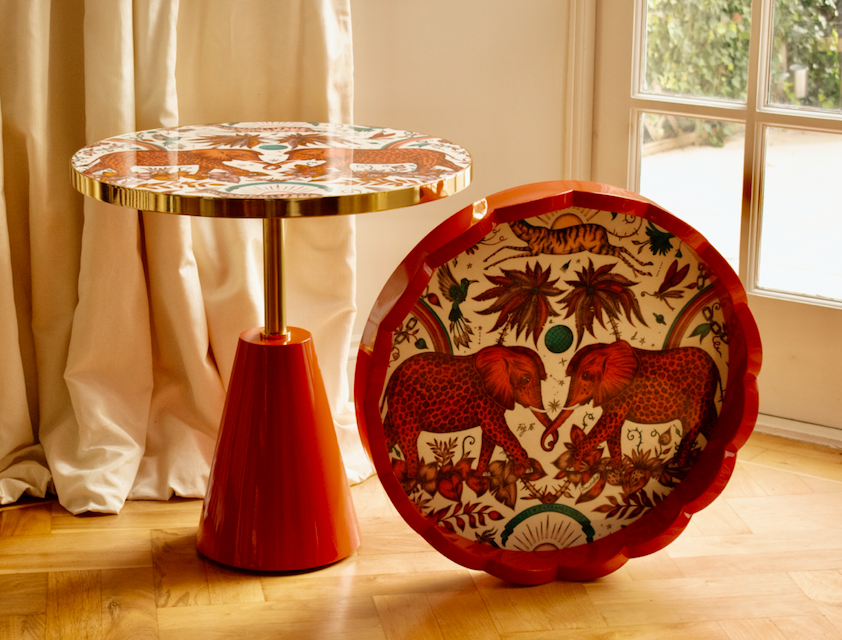
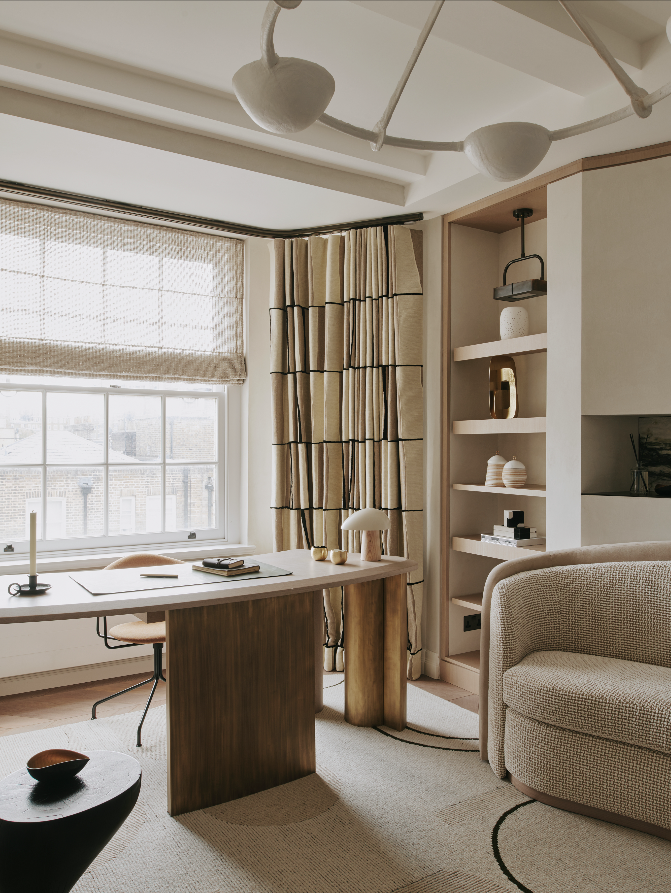
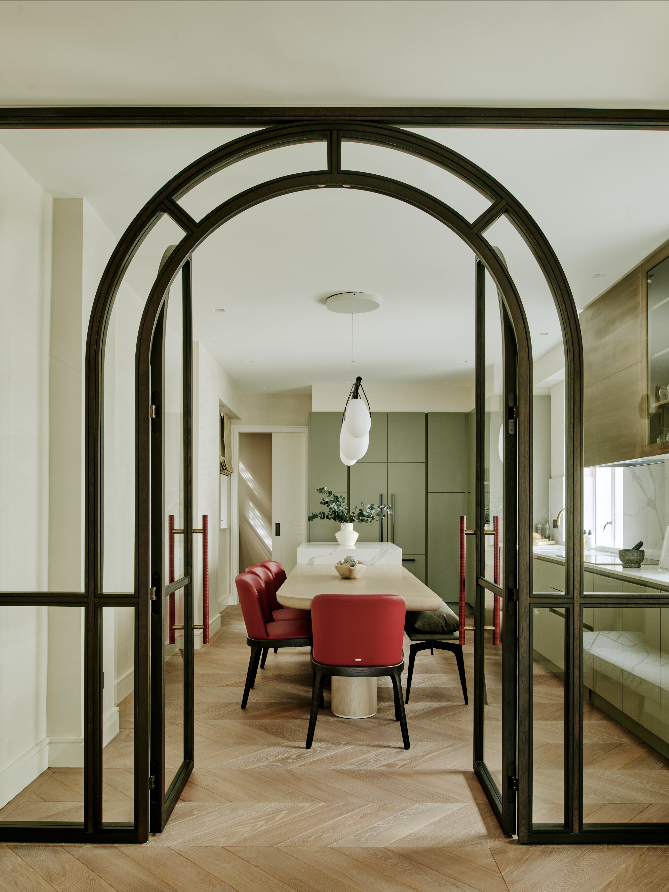
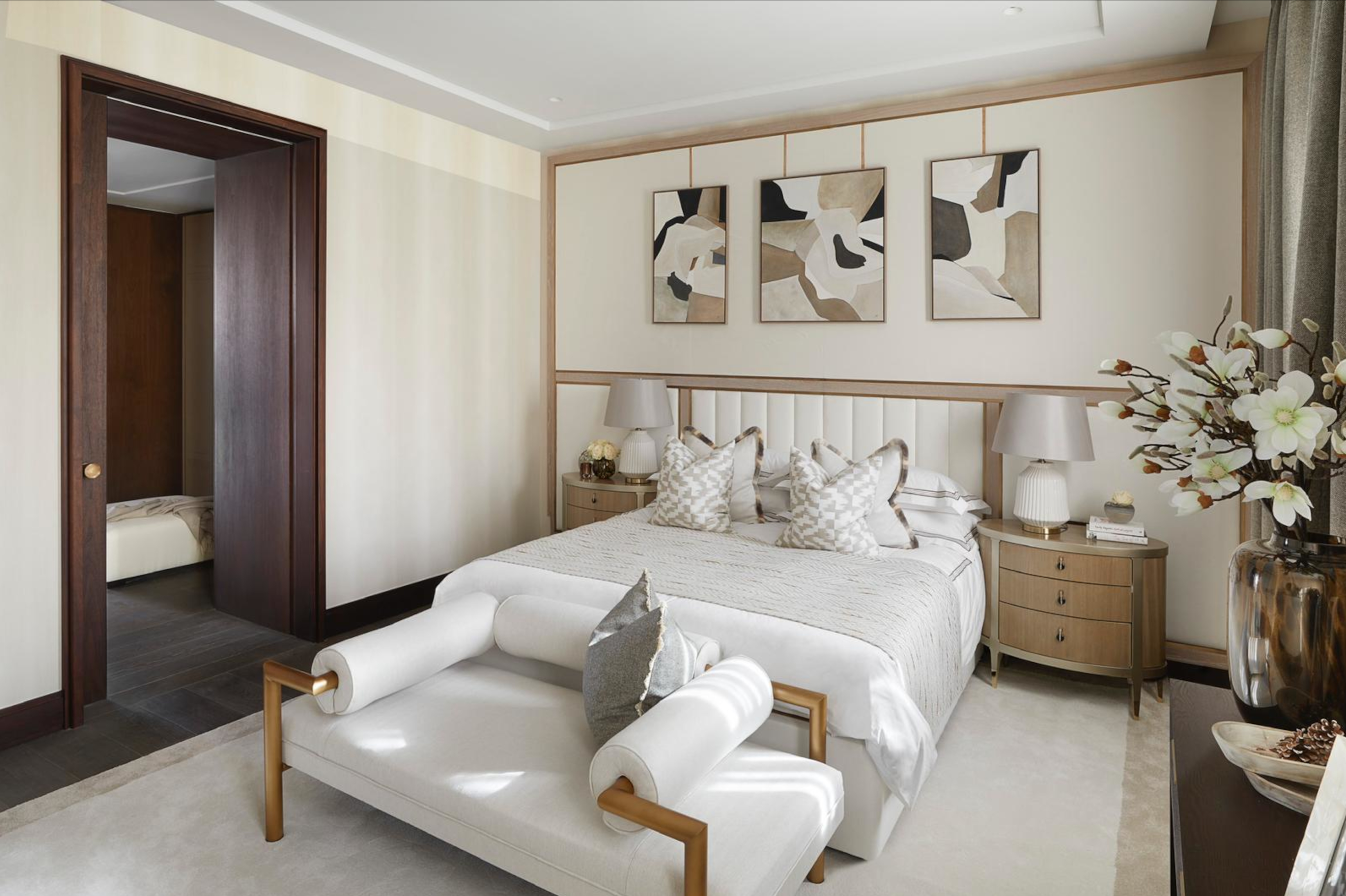
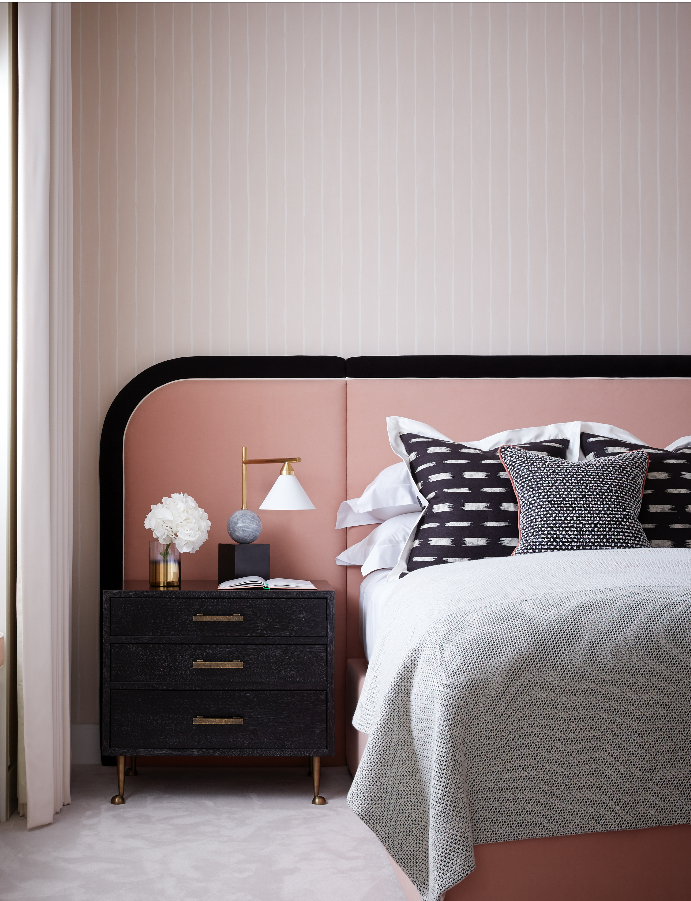
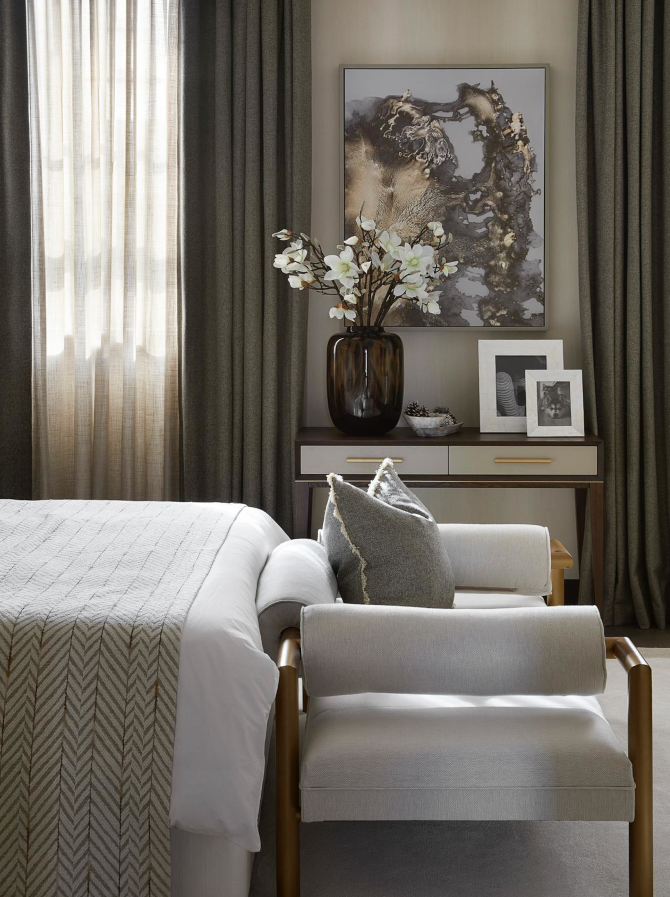


Leave a Reply
You must be logged in to post a comment.